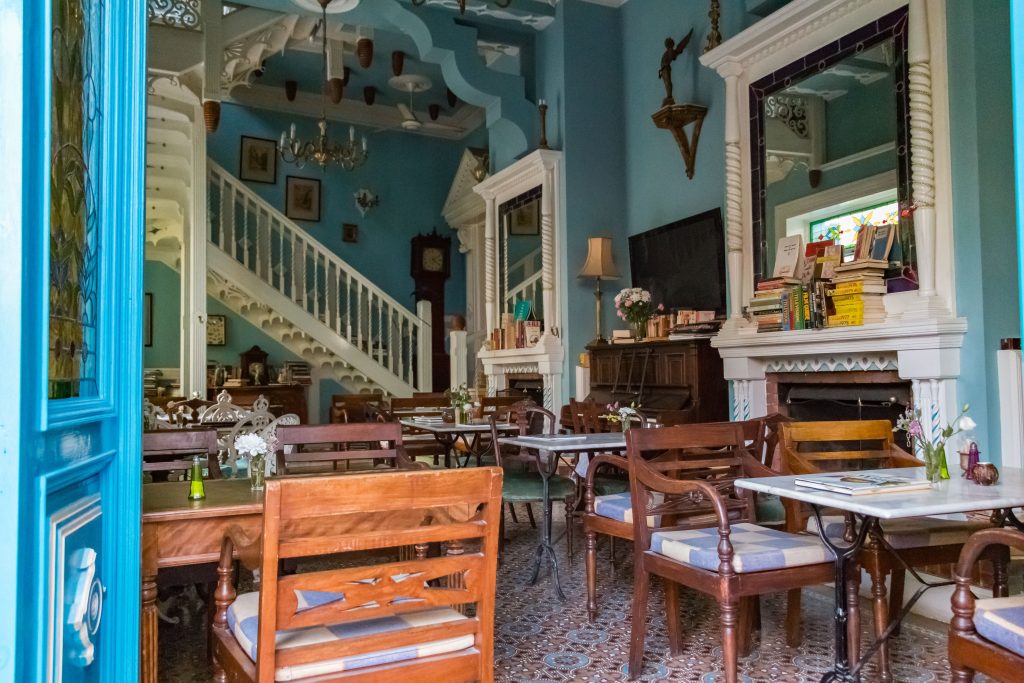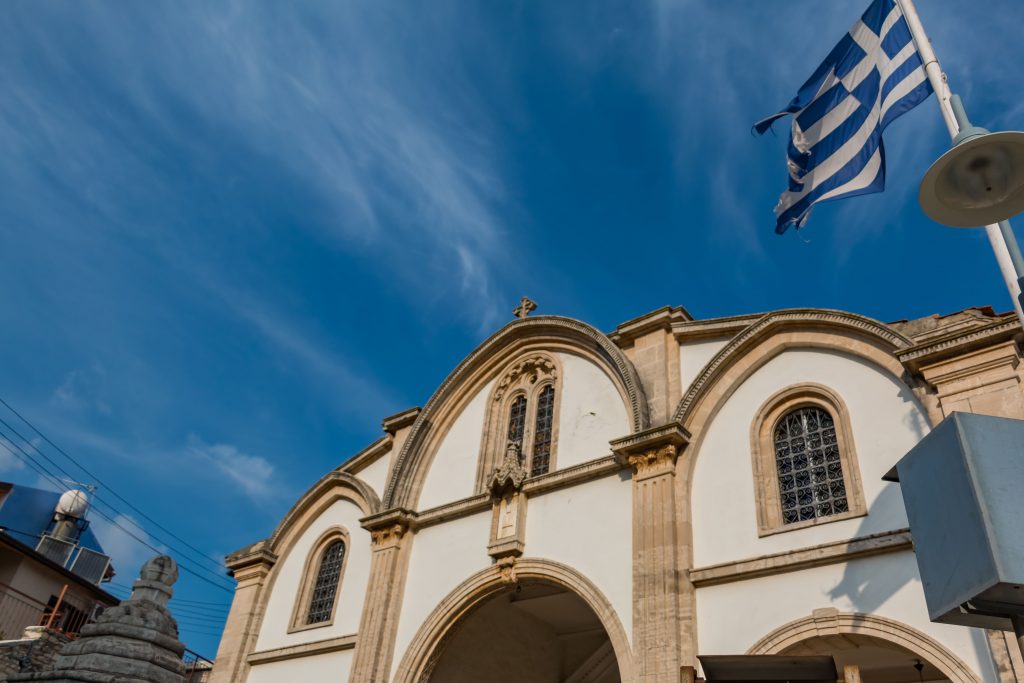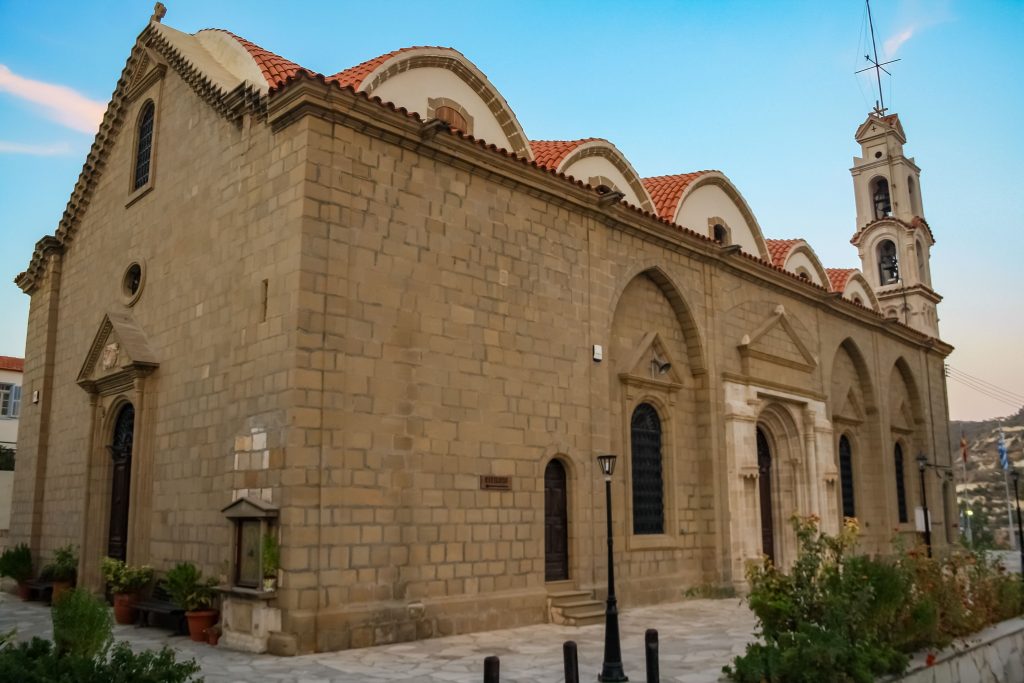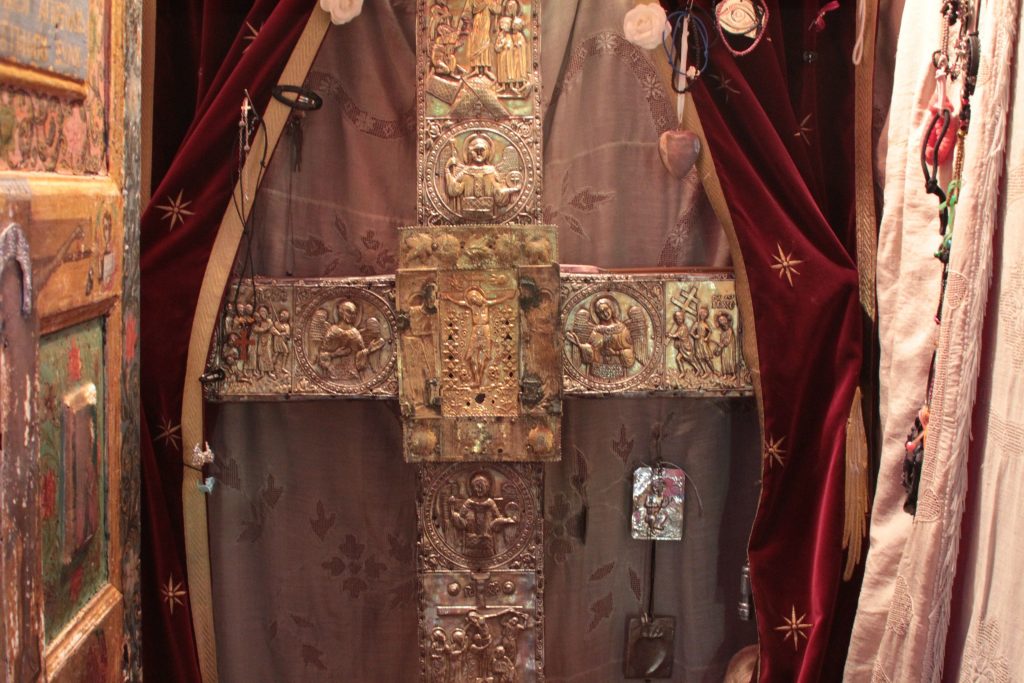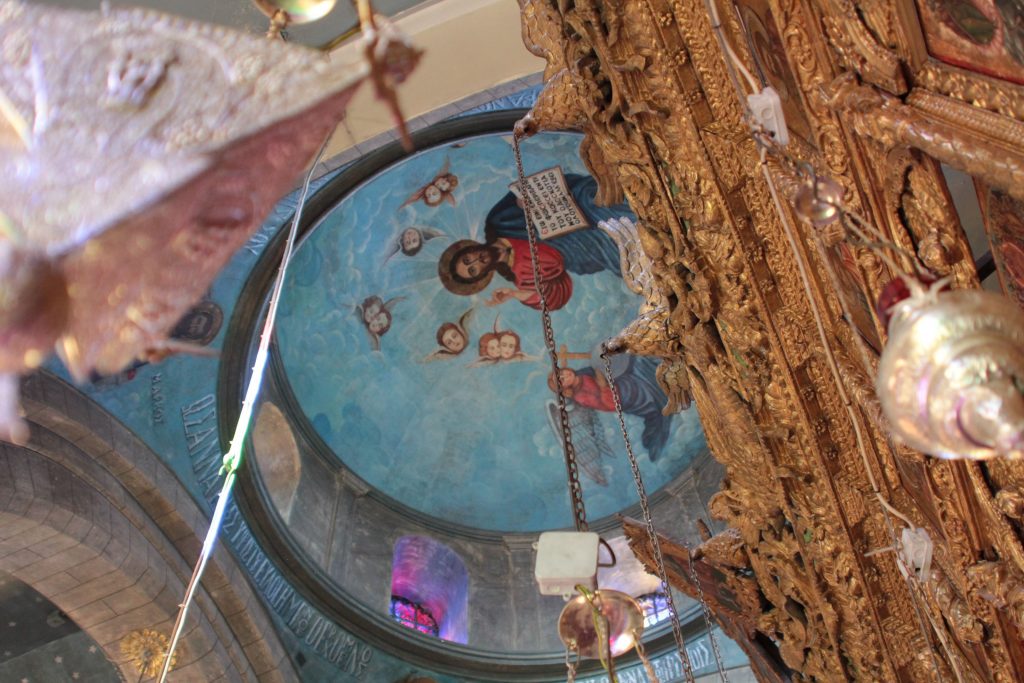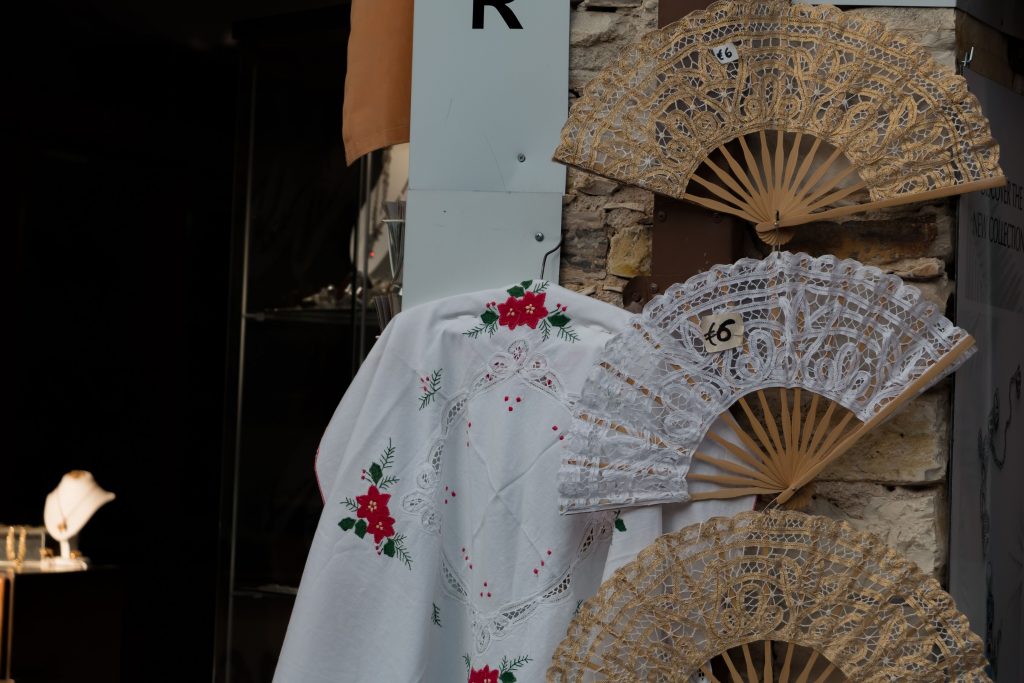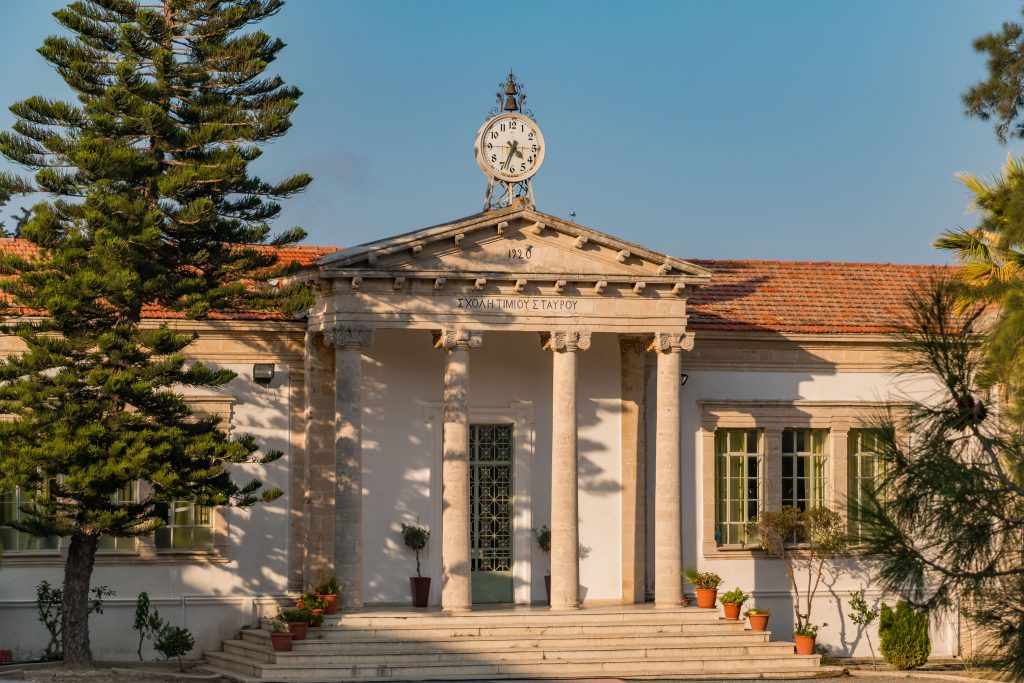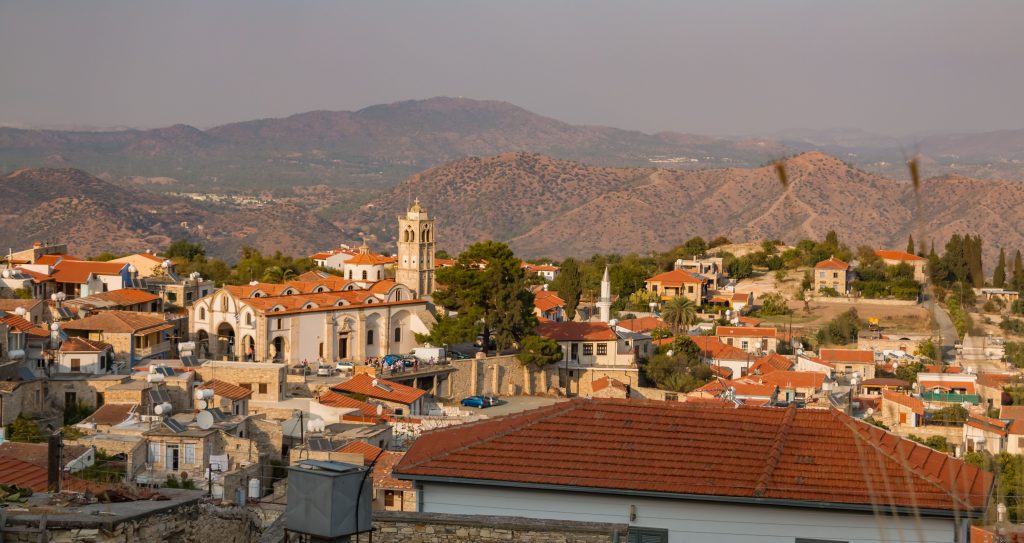Pano Lefkara
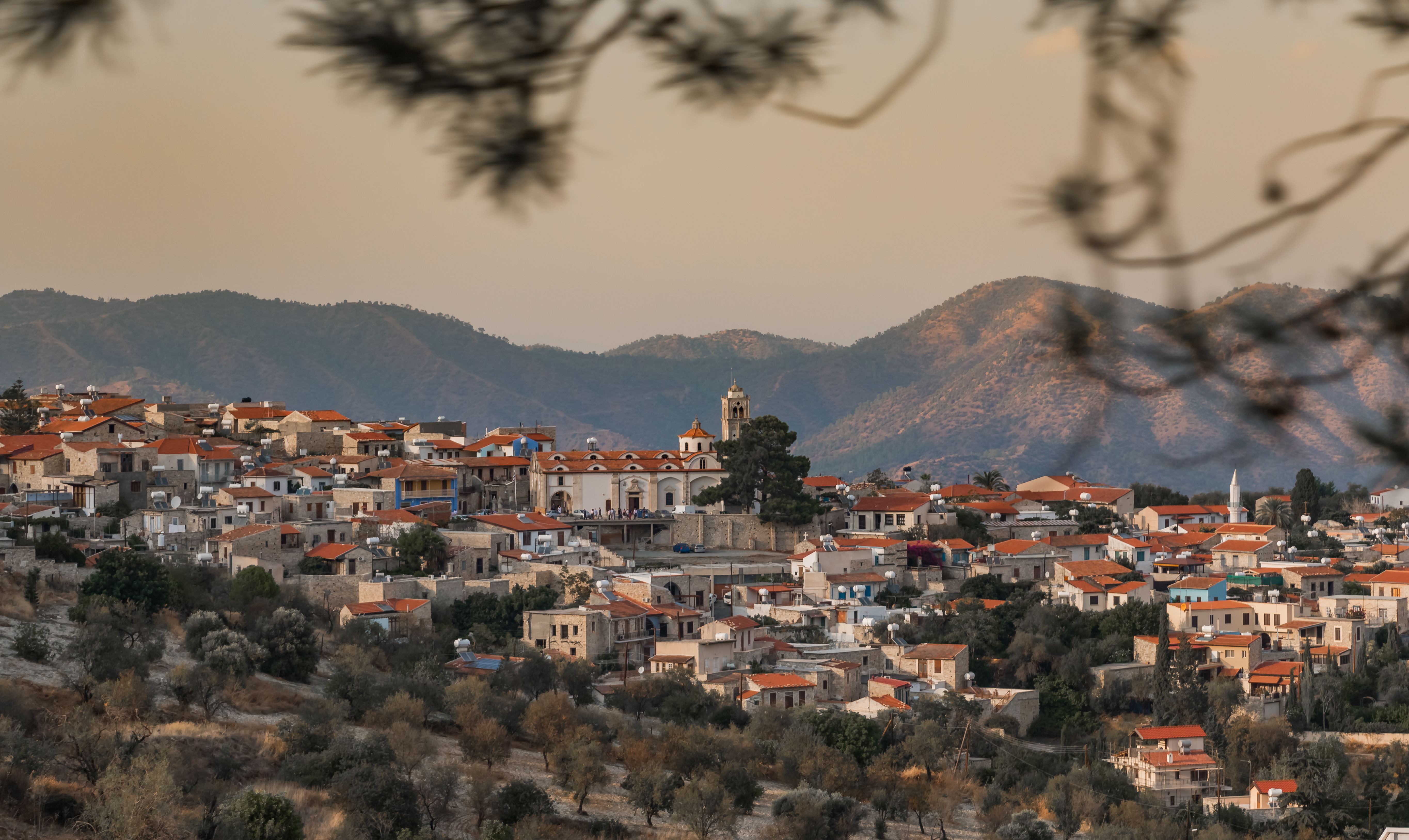
Pano Lefkara is a village situated in the Larnaca district of Cyprus, 39 km west of Larnaca, 48 km south of Nicosia and 48 km northeast of Limassol.
One of the most picturesque villages in Europe based on surveys, Pano Lefkara is built amphitheatrically at 570 meters above sea level at the foot of Sotiras hill on the southeastern side of Troodos. Pano Lefkara is today an independent municipality of Megalonisi (as Cyprus is sometimes called, meaning “large island”) whose reputation exceeds the boundaries of its home island. In a landscape dominated by the white color of the stone hills, it is a large, densely built settlement with rich history and traditions and whose folk architecture is an integral part of its cultural heritage, attracting the eye of the visitor. The unique architectural character of the Pano Lefkara with the traditional stone houses built with the local stone that are standing on the street, having their courtyard inside and with balconies the one right next to each other, this character gives the place a unique kind of beauty and make the walk through the paved cobblestones look like a trip back in time. In many houses the Frankish and Venetian arches on the facades or inside the houses impress the admirers, as well as the imposing doors that used to allow entry to the loaded animals in the past.
Thanks to the world-famous Lefkara’s embroidery that made linguists include the word “lefkaritiko” in the Greek dictionaries, Pano Lefkara knows great tourist development and attracts not only tourists from all over the world, but also residents from all of Cyprus. Indeed, it is said that the fine technique of the lefkarian embroidery with complex designs and great variety, forced Leonardo da Vinci in 1481 to come to mountainous Larnaca and choose here a tablecloth for the Holy Altar in the Cathedral of Milan. The other element that made the village known, the silversmiths, is a combination of the knowledge of the past with the techniques of today and possibly appeared in the early 18th century.
The many agrotouristic accommodations, all in harmony with the traditional character of the village, the hotels, the many picturesque tavernas and the restaurants serving local delicacies, such as the local tavas (lamb in the oven) that is cooked only here, the traditional Greek cafes and the modern cafeterias, make up the image of the area and make Pano Lefkara an ideal destination for a weekend getaway. Besides, there have been many foreigners who chose to have their political weddings in the local town hall.
For those who wish to obtain a living piece of the history the village, there are many shops selling embroidery and silverware, traditional loukoumia (local Turkish delight) from the local factory, that you will find in the narrow streets as well as on the main street of the village. Even today the women of the village, sitting in their chairs, carefully embroider the famous lefkaritiko embroidery in the inner courtyards of their homes or outside the shops and houses, inviting strangers to see their delicate handicrafts.
The area of Lefkara has been inhabited since the 7th century AD, a period when the inhabitants of the island who lived on the coast moved inside because of the Arab raids. The first written reference of the area is made by Saint Neophytos the Egklistos, which states that he was born here in 1134. Indeed, the house where the saint met with his future wife before becoming a monk is still there.
During the Frankish rule, Pano Lefkara was a feud, while after the English occupation of Cyprus (1878) it became a municipality. The great growth experienced by the region began in the early 20th century when the local embroidery trade started to “flourish” across Europe. Following the independence of Cyprus in 1960 and the Turkish invasion of 1974, the significant Turkish Cypriot presence of the village disappeared, followed by the tourist development that continues to this day. Regarding the origins of the name Lefkara, there are three versions: the first one claims the name to come from the words lefka ori (meaning white mountains in Greek), because the area is surrounded by the white, rugged limestone landscape; the second version states that it was named
by the small poplar trees (lefkes in Greek) that where once abundant in the area; the third version refers to the first settler who was called Lefkalos.
The separation of Pano Lefkara and Kato Lefkara (Upper and Lower Lefkara), two separate settlements, which are about 1 kilometer away, has existed since the Ottoman rule, and it is likely that the lower settlement was founded by displaced Greeks.
Important local attractions are the Local Museum of Traditional Embroidery and Silversmith work of Lefkara, which presents the two elements of the tradition of the area and is housed in a 19th century mansion, as well as the central church of Timios Stavros of Lefkara (Holy Cross of Lefkara), a 14th century building and one of the three churches in Cyprus where a part of the Holy Cross is kept.
Apart from the Holy Cross, the area has many chapels. In the southeastern part of the village there is the “Pii”, meaning spring, due to the water source that flows continuously; at the entrance of the village is the chapel of Agios Timotheos, below is the chapel of Archangel Michael, while to the north towards Kornos is the Byzantine chapel of Panagia Livadiotissa. In the southwest is the Metamorphosis tou Sotiros (the Transfiguration of the Saviour), which also gave its name to the mountain and which dates back to the 14th century. For the lovers of hiking, there is a nature trail that starts from the northern entrance of the village and climbs round the mountain. Finally, there is the 10th century chapel of Agios Mamas, the chapel of Agios Georgios Sirkatis, the chapel of Agios Xenophontas, of Agia Marina, of Agia Paraskevi, of Agios Thomas, of Agios Dimitrios, of Panagia tis Omorfias and of Agios Georgios Kontou.
The approximately 800 inhabitants of Pano Lefkara are engaged in tourism, embroidery and other occupations. An important event is the summer annual Lefkara Festival and the Feast of the Holy Cross on September 14th, when a big feast is held in the village.

